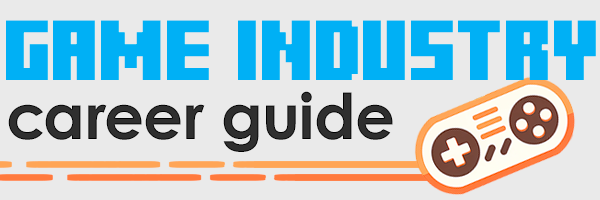6 Tips for Beginner Video Game Localizers

Marek Makosiej is a professional technical translator and localizer for games and other software. His guest post below is aimed to help aspiring game localizers understand a bit about the industry, without getting lost in translation. If you think a job doing game localization might be for you, then don’t miss this!
Marek Makosiej: A career in game localization is very rewarding, but there are several things that you need to remember as a candidate. Here is my two cents as a localization industry veteran with 20 years of experience.
Tip 1: Know the language AND the culture
First of all, being a gamer doesn’t make you a professional linguist. The good news? Universities don’t make you a professional linguist, either. Because culture is as important as language in localization — localization is, in short, translation plus cultural context.
For example, most of the slang words used by gamers have non-slang counterparts in language, which may be appropriate to use instead — especially in documentation, and sometimes in marketing, too. It depends on the target audience the content is aimed at. Regular words should be used rather than slang that may not look right to an average person who wants to play a game but may not be familiar with the special slang used in the source material.
In-game language is obviously different, as the choice of slang or non-slang depends on each character and the game type itself; the whole trick is to convey, for example, gangster talk from Grand Theft Auto, to the target language (culture!) without sounding artificial, archaic, or out of place (and no localizer is a gangster, right?). So it makes things a lot more demanding than people think. (I believe there’s budget for consulting true gangsters with your game localization work. ;))
But you can learn it with time and practice. Aspire to excelling in the target language, and the target culture.
Tip 2: Follow the specs
Serious companies spend millions on content creation, and 1-2% of their marketing budgets is on translation and localization. They want good return on that investment, because that means sales and growth.
That’s why it is of ultimate importance that your delivery is in line with what your localization project manager asked you to do and follow. Remember that you will be evaluated throughout the project to see how your work looks in terms of quality and service, so always follow the project specifications, style guides, and glossaries.
Tip 3: Follow the style guides
Style guides are extensive documents each localization department in each game company must have. Get used to reading them, because they define all the linguistic and cultural conventions that must be adhered to when working on a given target language version of a product.
More importantly, get used to following them even if you don’t like what’s inside, just as you must follow any other project instructions or specifications. You may report bugs to your contact at the customer’s company, but it’s up to them to decide whether they will implement changes or tell you to stick to the current version of the instructions.
Tip 4: Use the glossaries
Glossaries! Yes. You need to follow them no matter what, too. It’s not time for your own guesses or habits (jargon, again!) – use the terms that you were given by the project manager.
Most glossaries have been in use for some time, often in other products as well, and what’s more important, they are approved by a chief terminologist. Terminology management and the set of rules to follow is what sets the professional localization apart from the poor one.
Tip 5: Leverage translation tools
Last but not least: computer aided translation (CAT) tools! The translation industry has used them for years now, to help ensure the quality, consistency, and pace of localization projects.
Translation memory (TM) tools store your work and the approved work of your peers from the past, so that you can reuse it on new jobs. Translation memories are managed and owned by your customer, just like the glossaries, so make sure you follow the approved translations in your work – style, grammar, and terms.
CAT tools also allow engineers to block everything that’s untranslatable. Advanced translators/localizers sometimes do it themselves if needed, using tagger modules in CAT tools and regex regular expressions, but that’s rare. Typically, the files never leave the customer’s company without already being prepared, unless you are a translation company and a part of your job is doing this on behalf of your customer.
Trados Studio, memoQ and Memsource are the most popular CAT tools you should learn first. You need to work with these tools if you want to work with the biggest names in the game industry.
Tip 6: There’s plenty of room
Good news? The localization industry constantly needs the influx of good vendors. Whether freelance or companies, recent editions of the GameQA and Localization conferences show there is still a gap to be filled in. You can reach out to game companies by finding employees with the job title of Localization Manager, or if they don’t have that one, just look for Marketing Manager. Contact them, and off you go. Good luck!
Thanks to Marek Makosiej for contributing this guest post. You can reach him via ATL Translate.
Read my new book!
Making games for a living is an incredibly rewarding career, but it’s hard to break in unless you have insider knowledge. This book levels the playing field.


Hello Jason!
I’m Guilherme from Brazil, I’m 16 years old and I’ve read all your articles on this site, and I was wondering… Have you ever worked on a MMORPG game or met someone who works(ed) as a Game Master (aka GM)?
If so, could you write something about that career?
Hi Guilherme, the job of Game Master is actually a type of customer service/support job. I do have one article about the community manager job, which is similar, but I will take your advice and find some other customer service roles to interview for future articles. Thank you for your request!
Thanks for the information